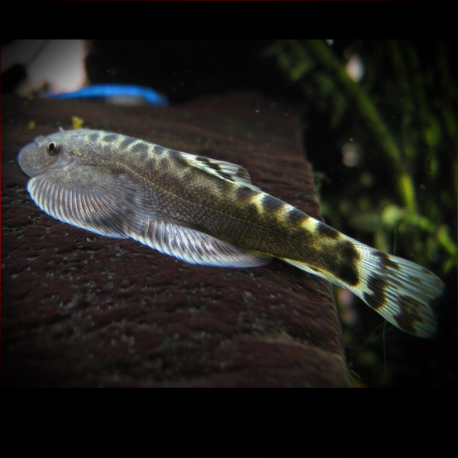More info
Datasheet
| Minimum Tank Size | 90 litres / 23.78 US gallons |
| Maximum Size | 8.0cm / 3.15inches |
| Temperature | 20°C / 68.00°F - 24°C / 75.20°F |
| Hardness | 1.01dgH / 18ppm - 12.05dgH / 215ppm |
| pH | 6.0-8.0 |
Behavior:
Sinogastromyzon puliensis is known to be very peaceful, but its specific environmental requirements limit the selection of suitable tankmates. It should not be housed with much larger, aggressive, territorial, or competitive fish. Potential tankmates include small, pelagic cyprinids like Tanichthys, Danio, and Rasbora, stream-dwelling gobies from genera Rhinogobius, Sicyopterus, and Stiphodon, and rheophilic catfish such as Glyptothorax, Akysis, and Hara spp. While some loaches from certain families are suitable, thorough research should be conducted before adding them to the tank. Sinogastromyzon spp. are loosely gregarious, and it is best to keep them in groups of four or more to observe their most interesting behavior. They can be territorial to some extent, with males potentially being more aggressive than females, making interactions such as foraging battles entertaining to observe.
Feeding and Diet:
Sinogastromyzon puliensis are specialized micropredators and biofilm grazers, feeding on small crustaceans, insect larvae, invertebrates, and algae. In captivity, they may accept sinking dried foods, but a diet of live or frozen Daphnia, Artemia, and bloodworm is essential for their health. It is preferable to have rocks and other solid surfaces with algae growth in the tank for their grazing needs. In scenarios where natural algae growth is insufficient, a separate nursery tank with algae-covered rocks can be maintained to ensure an adequate food source for these fish. Emaciated specimens may require a constant source of suitable foods to recover if they are weak when acquired.
Reproduction:
While no recorded data on aquarium breeding exists, Sinogastromyzon puliensis is a seasonal spawner in the wild. They lay demersal eggs, with fry drifting downstream post-hatching before migrating upstream as juveniles. Spawning is hypothesized to occur during the rainy season between May and September, with upstream migration happening from August to November.
Sexual Dimorphism:
Males of Sinogastromyzon puliensis tend to have a relatively slimmer body shape, with a sharper angle at which the pectoral fin meets the head compared to females. These differences are more noticeable when viewed from above or below.
Habitat and Distribution:
S. puliensis primarily inhabits the middle and upper reaches of rivers and streams with swift currents, preferring shallow habitats with rocky substrates and a rich biofilm. Endemic to western river drainages of central and southern Taiwan, they are considered endangered due to various anthropogenic activities like sandstone extraction and water resource over-exploitation. The species' distribution ranges from southern mainland China to Taiwan, Laos, and northern Vietnam, where they exhibit specialized adaptations for life in fast-flowing waters.
Aquarium Setup:
For housing Sinogastromyzon puliensis, a clean and well-oxygenated environment is crucial, requiring an oversized filter with a high turnover rate. The substrate can be gravel, sand, or a mix of both, complemented by water-worn rocks, pebbles, and driftwood. Although not typical of its natural habitat, hardy aquatic plants like Microsorum, Crinum, and Anubias spp. can be added. These fish are intolerant to organic waste accumulation and need spotless water to thrive, requiring stable water conditions. It is advisable to avoid biologically immature aquariums and ensure a secure lid as they possess climbing behavior.

